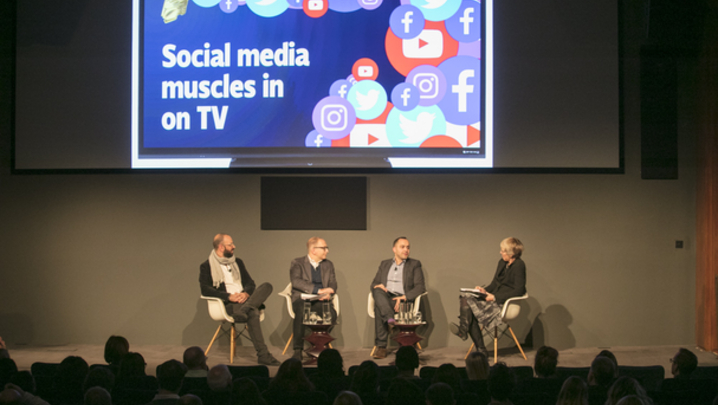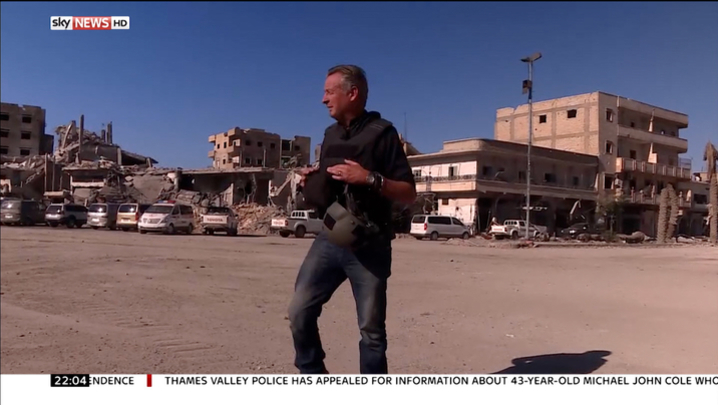A trio of experts explained how television can harness the power of social media to engage and build audiences at RTS London’s first event in its new home at digital services company Atos in central London.
“Building a buzz 3: social media masterclass” in late September was the third in a series of linked events run by the RTS centre over the past 18 months, following “Building a buzz: what makes a good PR” campaign and “Building a buzz: what makes a good promo”.
“You can pretty much guarantee that your [TV] audience is on social media,” said Jo Booth, head trainer and director of publicity agency, Social Media Makes Sense (SMMS), which works on dramas that include BBC One’s Poldark and ITV’s Endeavour. “Broadcasters want to know that their audience is engaged and will come back for more – if you can prove that, you’ve got a high chance of being recommissioned.”
She continued: “Budgets are always tight so social media offers [TV] a huge platform to reach millions of people at relatively low, even free, cost.”
Most of the programmes SMMS promotes have Facebook, Twitter and Instagram accounts. Facebook, which has 2.2 billion monthly users worldwide and 33 million in the UK, is the best social media platform for short-from video content, said Booth.
Twitter has a far smaller reach, with just 330 million global users, but it is “where we engage with our audience – we reply to them daily”, revealed Booth. Text and images are highly effective on the platform, videos less so.
Booth warned, however, that Twitter offers a home to trolls: “You are going to hear a lot more negativity on Twitter than you would on Facebook.”
Photo and video sharing social network Instagram has 1 billion monthly users worldwide. “Branding and branded content does really well on Instagram,” she said.
David Levin is creative director of social media content producers That Lot. He began his working life at MTV, before turning to writing. Embracing Twitter, Levin began tweeting for his local pub in Hackney, East London. A hobby became a job when he landed the role of “professional tweeter” on The Voice.
“Platform specificity – making content that works really well on a specific platform” is key, said Levin, who co-founded That Lot with writer and actor David Schneider. He co-wrote Armando Iannucci’s film, The Death of Stalin and starred in the Alan Partridge series.
The agency’s clients include Hat Trick’s BBC One comedy quiz show, Have I Got News for You. “On their Twitter and Facebook accounts, we make political and topical jokes every day in the tone and voice of the TV show,” Levin explained.
“Our brief from Hat Trick was to keep the show [in the news] between each episode by doing the same sort of things they do on the show. We have a team of satirical writers who turn out jokes.”
Video on social media, Levin said, “is becoming ever more important”. This is the main focus of That Lot’s work for Channel 4. For the school-based drama, Ackley Bridge, it made a Snapchat drama to run immediately after the TV show out of extra scenes filmed specifically for the picture and messaging app.
The drama received 2.6 million views on Snapchat, with 96% of viewers watching from start to finish. “We extended the TV show into Snapchat,” he explained. “The reason that it worked so well is that we made very Snapchatty content, not just TV content that we put on Snapchat.”
Craig Dillon, founder and creative director of Westminster Digital, arguably has a tougher task than the agencies working for TV – he is trying to make politicians, from all parties, appear human on social media.
“We don’t focus on what the message is – that’s down to the politicians – we just deliver the content,” he explained. “There’s a mad scramble in all the parties, who are trying to figure out how to use this political weapon.”
Some are doing better than others – Dillon showed an amateurish video featuring Tory MP Greg Knight, who delivered his 2017 election appeal, unintentionally, in the style of Alan Partridge. The video was a YouTube hit, although for its comic rather than political value.
“Often political communicators don’t know how to do any modern, digital communications,” said Dillon. “We are saying to [them] that one social media post has the power of 10,000 leaflets – and you can’t throw social media posts into the bin.”
The RTS London event, “Building a buzz 3: social media masterclass”, was held at Atos in central London on 26 September. It was chaired by the radio and TV presenter and voice over artist, Gavin Inskip.









